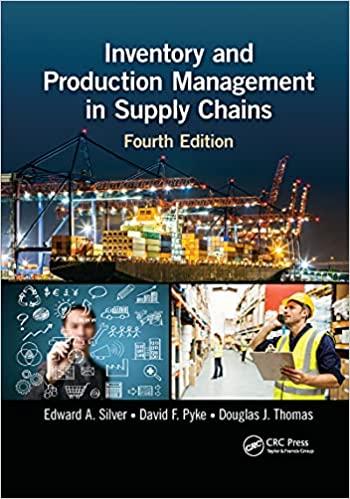Consider an item with A = $25; Dv = $4,000/year; Lv = $100; B1 = $30; and
Question:
Consider an item with A = $25; Dv = $4,000/year; σLv = $100; B1 = $30; and r = 0.10 $/$/year.
a. Find the following:
i. EOQ, in dollars ii. k, using the B1 criterion iii. SS, in dollars iv. Annual cost of carrying SS v. Total average stock, in dollars vi. Expected number of stockout occasions per year vii. Expected stockout costs per year
b. The cost equation used to develop the rule for the B1 criterion is ETRC(k) = kσLvr +
D Q B1pu≥(k) (6.53)
As seen in part 6.3a, the two components of Equation 6.53 are not equal at the optimal k value. (This is in contrast to what we found for the EOQ analysis in Chapter 4.) Why are the two components not equal? What quantities are equal at the optimal k value?
c. By looking at the basic equations for the items requested in (a), discuss how each would be affected (i.e., whether it would be increased or decreased) by an increase in the r value.
Step by Step Answer:

Inventory And Production Management In Supply Chains
ISBN: 9781032179322
4th Edition
Authors: Edward A Silver, David F Pyke, Douglas J Thomas





